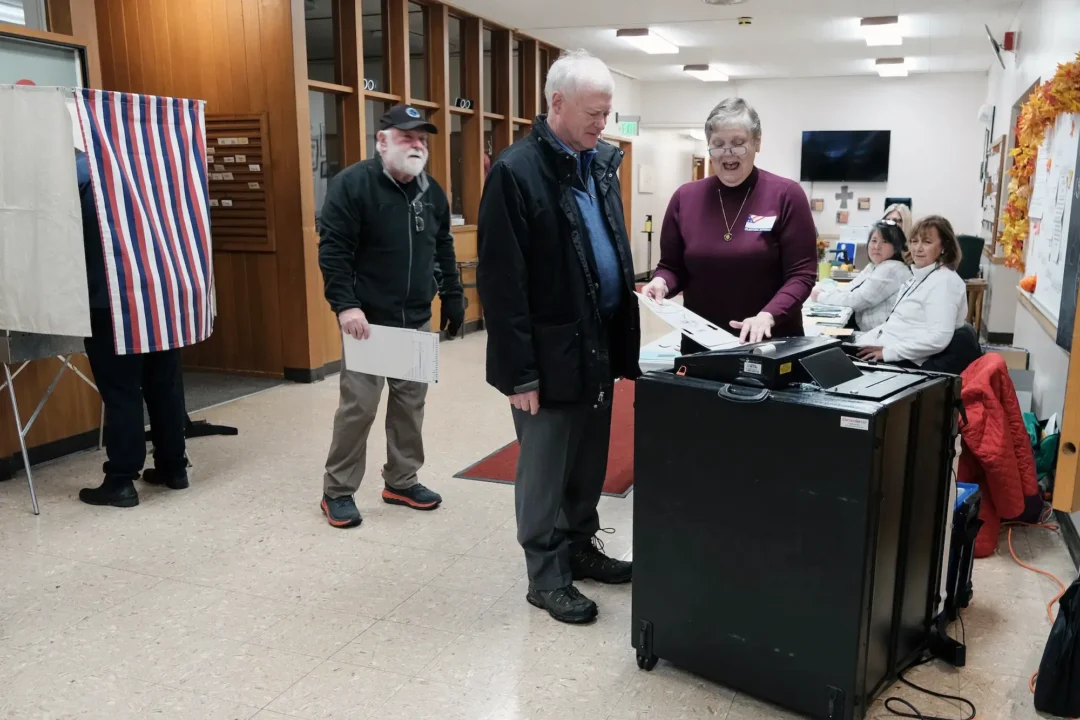The Alaska Supreme Court has ruled to allow a measure seeking to repeal the state’s ranked-choice voting system to remain on the November ballot, marking the latest chapter in a legal battle over the state’s electoral process.
The high court’s order, issued on Aug. 22, affirmed a June 7 summary judgment by Superior Court Judge Christina Rankin, who ruled that the Alaska Division of Elections acted within its authority when it allowed the sponsors of the measure, known as 22AKHE, to correct errors in their petition booklets after they were submitted.
The Supreme Court’s brief 2-page order means that the initiative to repeal Alaska’s ranked-choice voting system will be presented to voters in November. A full opinion explaining the justice’s reasoning is expected to be released at a later date.
The controversy surrounding the ranked-choice voting repeal measure began when a group of voters filed a lawsuit against the Alaska Division of Elections alleging significant violations of law in the petition process. The plaintiffs claimed in their complaint that some petition booklets were left unattended in public places or improperly certified and that the Division of Elections mishandled the approval process.
In her pivotal June 7 ruling, Rankin sided with state election officials, concluding they had not violated the law by allowing petition sponsors to fix mistakes in their petitions.
“The Division acted within its authority in allowing the Sponsors to make corrections to the certification affidavits on individual booklets after they were filed, but before the Division completed counting signatures,” Rankin wrote in her opinion. “Additionally, the Division complied with all mandatory deadlines in placing the 22AKHE initiative on the November 2024 general ballot.”
However, the fate of the anti-ranked choice initiative became uncertain when, in a July 19 findings of fact, Rankin ordered election officials to disqualify 27 booklets containing around 3,000 signatures backing the repeal measure and ordered the Division of Elections to recount the remaining signatures to determine if the measure still met the required thresholds.
At the same time, she wrote, “There is no evidence in this case that there was a pervasive pattern of intentional, knowing, and orchestrated misconduct to warrant invalidating the 22AKHE initiative petition.”
Following the recount, elections officials notified the judge that the measure still had enough qualifying signatures, with Rankin issuing a final judgment on July 24, resolving the case in favor of the defendants.
Rankin’s final judgment prompted the plaintiffs to file an appeal with the Alaska Supreme Court, which eventually led to the Aug. 22 ruling that provided a green light for the repeal measure to proceed.
Scott Kendall, an attorney representing the voters who sued to disqualify the measure from the ballot, did not respond to a request for comment on the ruling.
Ranked-choice voting was introduced in Alaska following a 2020 ballot measure that also implemented an open primary system. Under this system, all candidates compete in a single primary, regardless of party affiliation. The top four candidates advance to the general election, in which voters rank the candidates by preference. If no candidate receives a majority of first-choice votes in the general election, the candidate with the fewest votes is eliminated and his or her votes are redistributed according to the voters’ next choices. This process continues until a candidate secures a majority.
Proponents of ranked-choice voting argue that it reduces political polarization and gives centrist candidates a better chance at winning. Opponents contend that it’s confusing and burdensome for voters, potentially leading to errors or spoiled ballots.
While advocates of ranked-choice voting contend that it ensures elected officials receive broader support from the electorate, critics say it unfairly disadvantages candidates with a strong but narrow base of support and forces voters to rank candidates they may not fully support.

